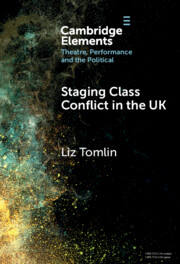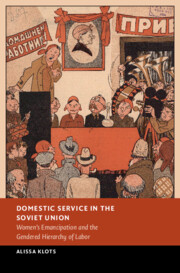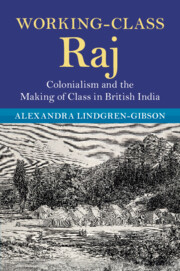Refine search
Actions for selected content:
39 results
Chapter 2 - Getting Carried Away in the Victorian Bildungsroman
- from Part 1 - “Psychological” Subgenres
-
- Book:
- Getting Lost in the Novel
- Published online:
- 26 July 2025
- Print publication:
- 07 August 2025, pp 54-88
-
- Chapter
- Export citation
Chapter 7 - Class
- from Part II - Social Contexts
-
-
- Book:
- Sean O'Casey in Context
- Published online:
- 23 June 2025
- Print publication:
- 10 July 2025, pp 79-88
-
- Chapter
- Export citation
Chapter 38 - Revisionism
- from Part VI - Critical Understandings
-
-
- Book:
- Sean O'Casey in Context
- Published online:
- 23 June 2025
- Print publication:
- 10 July 2025, pp 413-422
-
- Chapter
- Export citation
Chapter 36 - ‘For the Many, Not the Few’
- from Part IV - Afterlives
-
-
- Book:
- Percy Shelley in Context
- Published online:
- 17 April 2025
- Print publication:
- 24 April 2025, pp 277-283
-
- Chapter
- Export citation
11 - Labor Rights in Postrevolutionary Iran
-
-
- Book:
- The Rule of Law in the Islamic Republic of Iran
- Published online:
- 10 April 2025
- Print publication:
- 17 April 2025, pp 331-356
-
- Chapter
- Export citation

Staging Class Conflict in the UK
-
- Published online:
- 06 March 2025
- Print publication:
- 03 April 2025
-
- Element
-
- You have access
- Open access
- HTML
- Export citation
Chapter 13 - Trauma, Gender, and Resistance
-
-
- Book:
- Nineteenth-Century Literature in Transition: The 1850s
- Published online:
- 02 January 2025
- Print publication:
- 16 January 2025, pp 294-316
-
- Chapter
- Export citation
The Night of the Proletarian Families: Child Labor, Compulsory Education, and the Making of the Working Class around 1830
-
- Journal:
- International Labor and Working-Class History / Volume 107 / April 2025
- Published online by Cambridge University Press:
- 13 September 2024, pp. 16-29
-
- Article
-
- You have access
- Open access
- HTML
- Export citation
Chapter 12 - Student Success Considerations for First-generation, Working-class Latinx College Students
- from Part III - Institutional Arrangements
-
-
- Book:
- Supporting College Students of Immigrant Origin
- Published online:
- 16 May 2024
- Print publication:
- 23 May 2024, pp 249-267
-
- Chapter
- Export citation
20 - Sexuality in a Distant Metropolis: Buenos Aires from the Late Nineteenth to the Mid-Twentieth Century
-
-
- Book:
- The Cambridge World History of Sexualities
- Published online:
- 26 April 2024
- Print publication:
- 16 May 2024, pp 419-439
-
- Chapter
- Export citation
10 - Class in the History of Sexuality
-
-
- Book:
- The Cambridge World History of Sexualities
- Published online:
- 26 April 2024
- Print publication:
- 16 May 2024, pp 206-226
-
- Chapter
- Export citation

Domestic Service in the Soviet Union
- Women's Emancipation and the Gendered Hierarchy of Labor
-
- Published online:
- 25 April 2024
- Print publication:
- 02 May 2024
Gender and Deindustrialization: A Transnational Historiographical Review
-
- Journal:
- International Labor and Working-Class History / Volume 105 / April 2024
- Published online by Cambridge University Press:
- 05 April 2024, pp. 85-103
-
- Article
-
- You have access
- Open access
- HTML
- Export citation
8 - How to Deliberate with Everybody
-
- Book:
- Deliberative Democracy for Diabolical Times
- Published online:
- 28 March 2024
- Print publication:
- 04 April 2024, pp 168-185
-
- Chapter
- Export citation
Contemporary archaeological perspectives on intersectional inequality in a welfare state in twentieth-century Finland
-
- Article
-
- You have access
- Open access
- HTML
- Export citation
2 - The Politics of Class
- from Part I - Histories of the Present
-
-
- Book:
- The Cambridge Companion to Contemporary African American Literature
- Published online:
- 14 December 2023
- Print publication:
- 21 December 2023, pp 46-62
-
- Chapter
- Export citation
3 - Military Domesticity
-
- Book:
- Working-Class Raj
- Published online:
- 20 October 2023
- Print publication:
- 02 November 2023, pp 70-98
-
- Chapter
- Export citation

Working-Class Raj
- Colonialism and the Making of Class in British India
-
- Published online:
- 20 October 2023
- Print publication:
- 02 November 2023
Debt and crisis: Socio-economic critique of neoliberal transformation in Poland
-
- Journal:
- The Economic and Labour Relations Review / Volume 31 / Issue 2 / June 2020
- Published online by Cambridge University Press:
- 01 January 2023, pp. 211-229
-
- Article
- Export citation
10 - What Do Voters Think about the Descriptive Underrepresentation of the Working Class?
- from Part II - Representation and Responsiveness in Unequal Societies
-
-
- Book:
- Contested Representation
- Published online:
- 03 November 2022
- Print publication:
- 17 November 2022, pp 165-184
-
- Chapter
- Export citation
